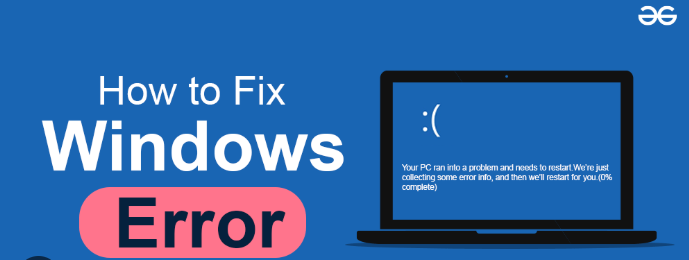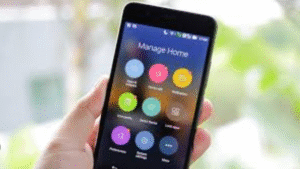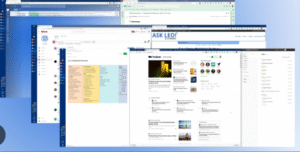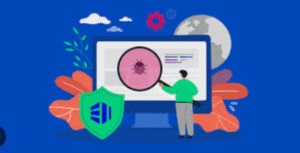
Windows is the world’s most popular desktop operating system, but it’s far from error-free. From system crashes and slow startups to annoying pop-up messages, users often encounter issues that seem to demand expert help. But here’s the good news: you don’t need a technician to fix most Windows errors. With a bit of guidance, you can solve many of them yourself—saving both time and money.
This comprehensive guide covers the most common Windows errors, explains their causes, and offers step-by-step solutions—perfect for beginners and intermediate users.
1. Blue Screen of Death (BSOD)
What Is It?
The Blue Screen of Death (BSOD) is a fatal error screen that appears when Windows encounters a critical system issue.
Common Causes:
-
Hardware conflicts
-
Driver issues
-
Faulty RAM
-
Corrupted system files
How to Fix:
Step 1: Note the Stop Code
When the BSOD appears, write down or photograph the stop code (e.g., MEMORY_MANAGEMENT, IRQL_NOT_LESS_OR_EQUAL).
Step 2: Boot into Safe Mode
-
Restart your PC and press F8 (or Shift + F8) before Windows loads.
-
Select Safe Mode with Networking.
Step 3: Use System Restore
-
Go to
Control Panel > Recovery > Open System Restore. -
Choose a restore point before the BSOD began.
Step 4: Update Drivers
-
Use
Device Managerto update drivers, especially graphics and chipset drivers.
Step 5: Run Memory Diagnostics
-
Press
Win + R, typemdsched.exe, and run the Windows Memory Diagnostic tool.
Step 6: Use SFC and DISM
Run these from an elevated Command Prompt to repair system files.
2. Slow Startup or Boot Time
Common Causes:
-
Too many startup apps
-
Fragmented hard drive
-
Outdated drivers
-
Background services
How to Fix:
Step 1: Disable Startup Programs
-
Open Task Manager > Startup tab.
-
Disable unnecessary programs like Skype, Adobe Updater, etc.
Step 2: Check for Malware
-
Run a full scan using Windows Defender or Malwarebytes.
Step 3: Optimize Drives
-
Open
Defragment and Optimize Drivesand optimize your HDD (not SSD).
Step 4: Use Fast Startup
-
Go to
Control Panel > Power Options > Choose what the power button does. -
Enable Fast Startup.
Step 5: Clean Boot
-
Open
System Configuration(msconfig). -
Under Services, check “Hide Microsoft services,” then disable the rest.
-
Restart your PC.
3. “Windows Update Failed” Error
Common Causes:
-
Corrupted cache files
-
Interruption during update
-
Lack of disk space
How to Fix:
Step 1: Run Windows Update Troubleshooter
-
Go to
Settings > Update & Security > Troubleshoot.
Step 2: Clear Windows Update Cache
Step 3: Check Disk Space
-
Ensure at least 10GB of free space on your C drive.
Step 4: Manually Install Updates
-
Go to Microsoft Update Catalog and download the latest update manually.
4. “This App Can’t Run on Your PC”
Common Causes:
-
Incompatible architecture (32-bit vs 64-bit)
-
Security settings blocking the app
-
Corrupt executable file
How to Fix:
Step 1: Check System Architecture
-
Right-click on
This PC> Properties. Make sure you’re not trying to run a 64-bit app on a 32-bit system.
Step 2: Run as Administrator
-
Right-click the app > Run as Administrator.
Step 3: Check SmartScreen Settings
-
Go to
Settings > Privacy & Security > Windows Security > App & Browser Control. -
Set SmartScreen to “Warn” instead of “Block”.
Step 4: Re-download from Official Source
-
Avoid third-party sites. Always use official websites or Microsoft Store.
5. “No Internet Access” Even When Connected to Wi-Fi
Common Causes:
-
DNS issues
-
IP conflicts
-
Driver problems
How to Fix:
Step 1: Restart Network Adapter
-
Settings > Network & Internet > Change Adapter Options. -
Right-click adapter > Disable, then Enable.
Step 2: Flush DNS and Reset IP
Step 3: Update Network Driver
-
Open
Device Manager > Network Adapters. -
Right-click your adapter > Update Driver.
Step 4: Change DNS
-
Go to
Network Properties > IPv4 Settings. -
Use Google DNS:
8.8.8.8and8.8.4.4.
6. Application Not Responding / Freezing
Common Causes:
-
Insufficient RAM
-
Software bugs
-
Outdated programs
How to Fix:
Step 1: End Task
-
Open Task Manager > Right-click frozen app > End Task.
Step 2: Update the App
-
Check for the latest version or reinstall it.
Step 3: Increase Virtual Memory
-
Go to
System Properties > Advanced > Performance Settings > Advanced. -
Set virtual memory manually: 1.5x your RAM.
Step 4: Check for Windows Updates
-
Updates often fix app compatibility issues.
7. File Explorer Crashing
Common Causes:
-
Corrupted system files
-
Faulty shell extensions
-
Thumbnail cache
How to Fix:
Step 1: Clear File Explorer History
-
Go to
Folder Options > General > Clear(under Privacy).
Step 2: Disable Shell Extensions
-
Use ShellExView (free tool) to disable third-party extensions.
Step 3: Rebuild Thumbnail Cache
Step 4: Restart Windows Explorer
-
Task Manager > Processes > Windows Explorer > Restart.
8. Printer Not Working or Offline
Common Causes:
-
Driver error
-
Connectivity issues
-
Print spooler service error
How to Fix:
Step 1: Restart Printer and PC
Step 2: Check Printer Connection
-
Make sure it’s connected via USB or Wi-Fi and powered on.
Step 3: Run Printer Troubleshooter
-
Settings > Devices > Printers > Troubleshoot.
Step 4: Restart Print Spooler
Step 5: Reinstall Printer Driver
-
Remove the printer > Reboot > Re-add it.
9. “DLL File Missing” Error
Common Causes:
-
Corrupted app installation
-
Removed DLL by antivirus
-
Registry error
How to Fix:
Step 1: Don’t Download DLLs Separately!
-
This is risky. Always reinstall the app.
Step 2: Run SFC
Step 3: Use System Restore
-
Restore your system to an earlier working state.
10. Black Screen After Login
Common Causes:
-
Graphics driver failure
-
Explorer.exe not loading
-
Corrupt user profile
How to Fix:
Step 1: Restart Explorer Manually
-
Press
Ctrl + Shift + Esc> File > Run new task > Typeexplorer.exe.
Step 2: Update Graphics Driver
-
Boot into Safe Mode, open Device Manager, and update or roll back the GPU driver.
Step 3: Check Display Settings
-
Sometimes Windows sends output to the wrong display. Press
Win + Pand select “PC screen only”.
Bonus Tips: Preventing Errors Before They Start
1. Keep Windows Updated
-
Regular updates patch security flaws and fix bugs.
2. Use Trusted Antivirus
-
Avoid downloading pirated or unverified software.
3. Clean Up System Regularly
-
Use built-in Disk Cleanup or third-party tools like CCleaner.
4. Backup Your System
-
Use File History or third-party backups to avoid data loss.
5. Learn Basic Command Line Tools
-
Tools like
sfc,chkdsk, andDISMcan fix most issues quickly.
Conclusion: You’re Your Own Technician Now
You don’t need to panic—or pay—for every Windows error you see. With the right steps and a bit of patience, you can fix most problems yourself. Bookmark this guide, follow the instructions, and you’ll be equipped to tackle nearly any common Windows issue like a pro.
Not only does fixing your PC build confidence, but it also saves time and money—and you avoid the downtime that comes with handing your system over to someone else.
Next time your Windows throws a fit, just take a breath, refer to this guide, and get to work. You’ve got this!







